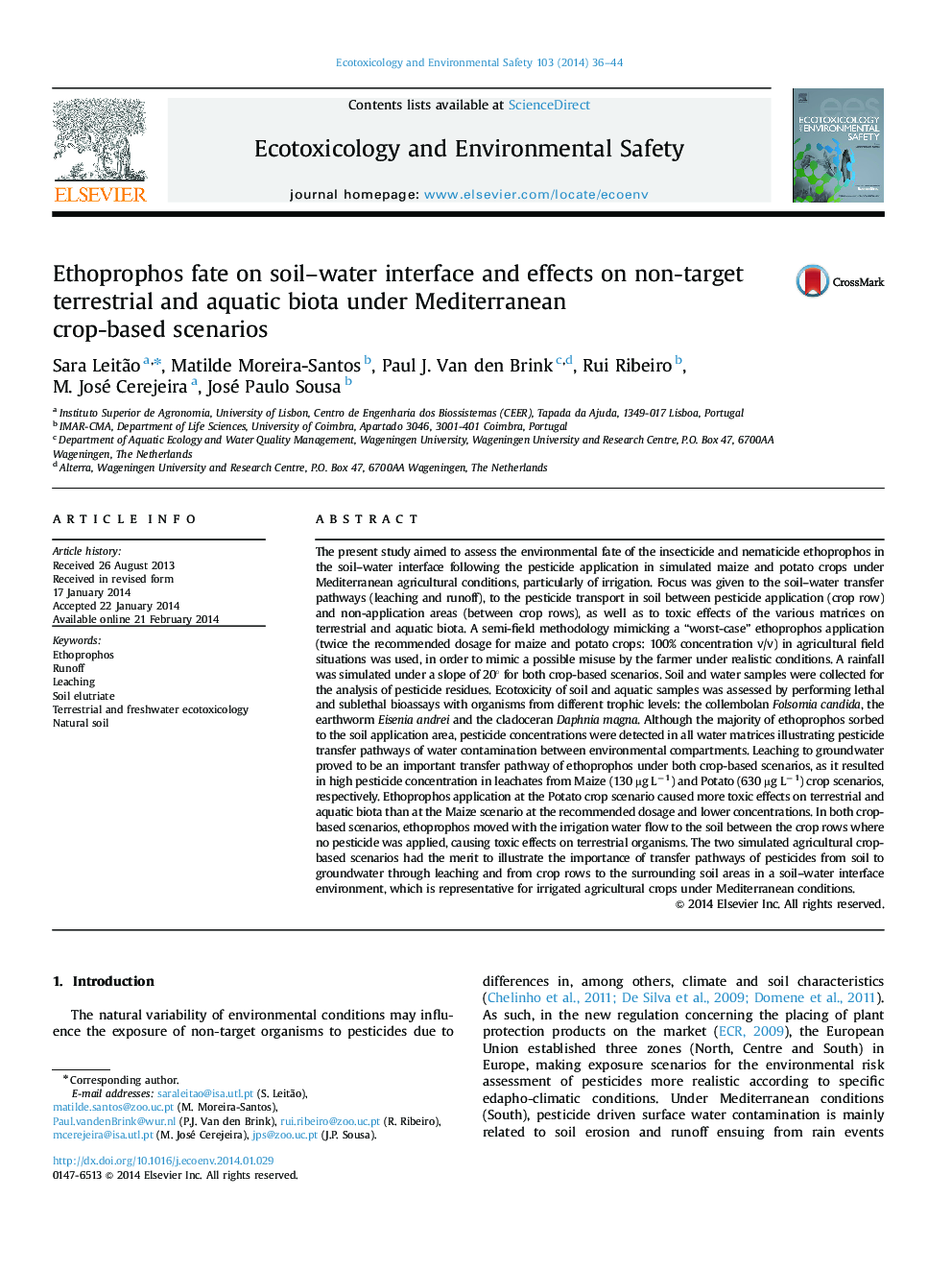| Article ID | Journal | Published Year | Pages | File Type |
|---|---|---|---|---|
| 4420192 | Ecotoxicology and Environmental Safety | 2014 | 9 Pages |
•Aquatic and terrestrial ecotoxicity of ethoprophos evaluated using non-target species.•Semi-field simulations of crop based scenarios.•Natural soil influenced pesticide availability in soil and surrounding waters.•Ethoprophos caused effects on collembolan at 0.03 mg kg−1dw soil.•Earthworms reproduction: EC50 of 8.3 mg kg−1dw soil.
The present study aimed to assess the environmental fate of the insecticide and nematicide ethoprophos in the soil–water interface following the pesticide application in simulated maize and potato crops under Mediterranean agricultural conditions, particularly of irrigation. Focus was given to the soil–water transfer pathways (leaching and runoff), to the pesticide transport in soil between pesticide application (crop row) and non-application areas (between crop rows), as well as to toxic effects of the various matrices on terrestrial and aquatic biota. A semi-field methodology mimicking a “worst-case” ethoprophos application (twice the recommended dosage for maize and potato crops: 100% concentration v/v) in agricultural field situations was used, in order to mimic a possible misuse by the farmer under realistic conditions. A rainfall was simulated under a slope of 20° for both crop-based scenarios. Soil and water samples were collected for the analysis of pesticide residues. Ecotoxicity of soil and aquatic samples was assessed by performing lethal and sublethal bioassays with organisms from different trophic levels: the collembolan Folsomia candida, the earthworm Eisenia andrei and the cladoceran Daphnia magna. Although the majority of ethoprophos sorbed to the soil application area, pesticide concentrations were detected in all water matrices illustrating pesticide transfer pathways of water contamination between environmental compartments. Leaching to groundwater proved to be an important transfer pathway of ethoprophos under both crop-based scenarios, as it resulted in high pesticide concentration in leachates from Maize (130 µg L−1) and Potato (630 µg L−1) crop scenarios, respectively. Ethoprophos application at the Potato crop scenario caused more toxic effects on terrestrial and aquatic biota than at the Maize scenario at the recommended dosage and lower concentrations. In both crop-based scenarios, ethoprophos moved with the irrigation water flow to the soil between the crop rows where no pesticide was applied, causing toxic effects on terrestrial organisms. The two simulated agricultural crop-based scenarios had the merit to illustrate the importance of transfer pathways of pesticides from soil to groundwater through leaching and from crop rows to the surrounding soil areas in a soil–water interface environment, which is representative for irrigated agricultural crops under Mediterranean conditions.
